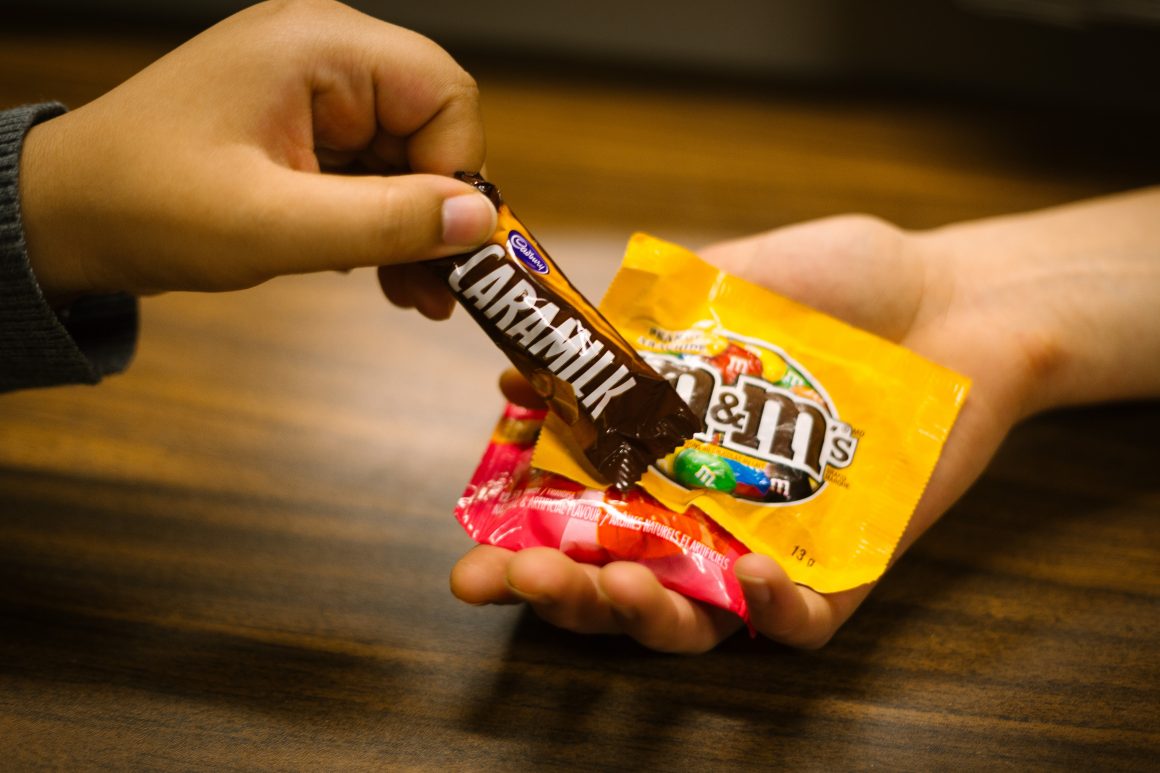
Student researches candy bartering system between trick-or-treating kids
By Derek Baker, October 25 2016 —
It’s almost Halloween, which means children across the country are getting ready for sugar-fueled debauchery. But the optimal way of achieving that sugar-high differs with each child, spurring the timeless tradition of the Halloween candy trade after a long night of trick-or-treating.
Fourth-year economics student Bernice Banks decided to study the Halloween candy bartering system that many kids participate in for her Honour’s thesis. She thought the project would be simple, but the system is much more complex than she originally thought.
“It’s crazy — these kids have systems in place that would confuse even the most senior economist,” Banks said while feverishly staring at an Excel worksheet. “I don’t know why I ever thought it would be easy.”
Though Banks is finding the candy trade something of a mystery, her little brother Mitchel explained that it isn’t as complicated as it seems.
“It’s really not that hard to understand. I don’t know what her deal is,” Mitchel said, studying his candy portfolio. “You see, three Mars bars will get you two bags of original Lay’s potato chips. Original flavoured chips are worth about 24 per cent less than a bag of flavoured chips. Packages of Maynards are worth twice the inverse value of Rockets, but only if someone in our trick-or-treating group managed to snag some Pixy Stix.”
Mitchel went on to list more exchange rates — a pack of Twizzlers is equal in value to a pack of Nibs, but a pack of Nibs will “obviously get you fewer packs of Skittles” than the tubular form of the candy.
The eight-year-old also proudly displayed graphs of the historical values of candy through his years of trick-or-treating.
“The value of Smarties has gone down drastically in recent years — kids prefer M&Ms now,” Mitchel said. “I feel really bad for my friend Robbie — he put all his Cadbury Mini-Eggs in one basket and invested everything he had in Smarties.”
Though the rules of the candy trade are complex, there’s one aspect that Banks is absolutely sure of.
“Boxes of raisins, toothbrushes, Glosettes and candy corn are all essentially worthless,” Banks said. “In fact, these often end up at the bottom of the trick-or-treating bag or pillowcase until being thrown away.”
Banks also noted that the rules get even more complicated the night after Halloween, when the candy trade enters the school playground market.
“It’s absolute anarchy — these kids form exclusive trading blocs among each other with a strict capitalist hierarchy of membership. The kids who managed to get enough full-sized candy bars completely rule the system, subjectively determining the value of everything else,” she said. “Why can’t these kids just get their shit together — if I don’t manage to figure out how this system works, I’m going to fail my project.”
Mitchel emphasized the significance of full-sized candy bars.
“These things are bars of gold — if you have a lot, you essentially get to rule the jungle-gym,” Mitchel said, studying a map of his neighbourhood. “Me and my friends are going to hit up all of the rich people’s houses this year. It’s gonna be tough — they all live on top of a hill — but I think we can do it, even if that means leaving flat-footed Freddy behind”
Filled with capitalist aspiration, Banks’ younger brother then tried to persuade Gauntlet reporters into signing an exclusive free-trade agreement with his group of friends, which we respectfully declined. The Gauntlet is now being brought to an international court by Mitchel for engaging in discriminatory trading practices.
This article is part of our humour section.
